Objective of the chapter: Geometry - Class 4
In the 4th Grade Geometry chapter, you will learn about:
- point, line segments, ray
- angles and types of angles
- triangles, quadrilaterals and circles
4th Grade Geometry
Point: A point is a very small dot made with a pencil. They have neither size nor dimension. A capital letter is used to name a point.
See the image given below. This is point O.

Line Segment
Line segment: A line segment is a straight path between two points.
Below image is an example of a line segment. This line segment is called line segment AB.
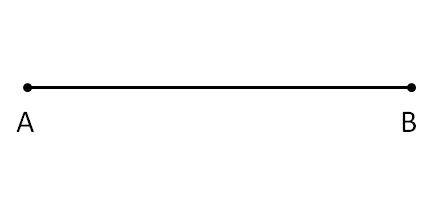
A line segment extending endlessly on both sides is called a line. It does not have a beginning or an end.
In the below image, we have drawn a line segment XY. Let extend XY on both sides and add two arrow marks on either end.
This represents a line XY.

Ray: A ray is a part of a line which extends endlessly in one direction only.
Draw a line segment PQ and extend it in one direction only. Put an arrow mark at that end. This represents a ray PQ. See the image given below.
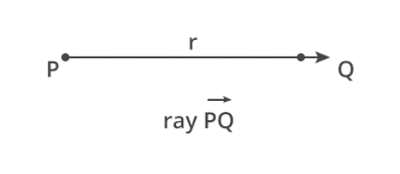
Measuring line segments
We use a ruler to measure the length of the line segment.

Follow the below rule to measure the line segment with a ruler:
- Place the ruler along the line segment.
- Adjust the ruler such that its '0' mark coincides with one end of the line segment.
- Read the mark on the ruler at the other end of the line segment.
- This gives the length of the line segment.
Angles
In geometry, an angle can be defined as the figure formed by two rays meeting at a common end point.
Thus, when two rays meet at a point, an angle is formed.
See the image given below. The angle is formed by ray OA and ray OB, with a common endpoint B.
The two rays forming the angle are called the arms of the angle. Ray OA and ray OB are the arms of the angle.
The common point O is called the vertex of the angle.
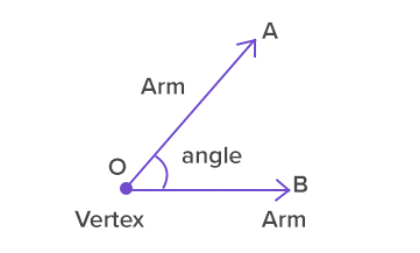
In the above image, the angle is called angle AOB or ∠AOB.
It can also be called angle BOA or ∠BOA.
The symbol ∠ represents the word 'angle'.
While naming angle, please remember that the vertex is always in the centre.
For example ∠AOB or ∠BOA. O is always is at the centre.
Types of Angles
In this section you will learn about different types of angles in geometry. There are four important types of angles - right angle, acute angle, obtuse angle, straight angle
Right Angle: A right angle is formed when one of its arm is horizontal and the other is vertical.
Below is an image of a right angle. Carefully see its arms.
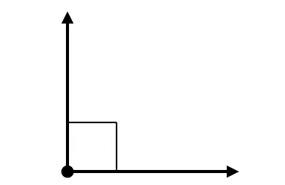
A right angle is marked as ∟.
Let's see some real life example of right angles.
At 3 o' clock, the hands of a clock form a right angle. See the image given below.
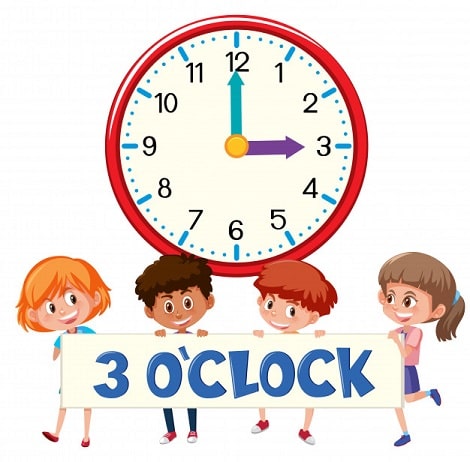
Let's see another example. At 9 o' clock also the hands of a clock form a right angle. See the image given below.
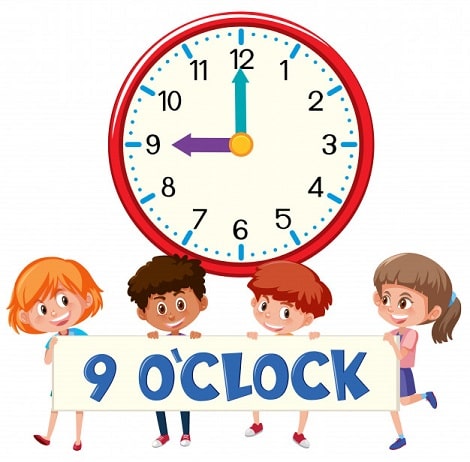
Acute Angle: An acute angle is less than a right angle.
The image given below is an acute angle.

Let's see one example of acute angle.
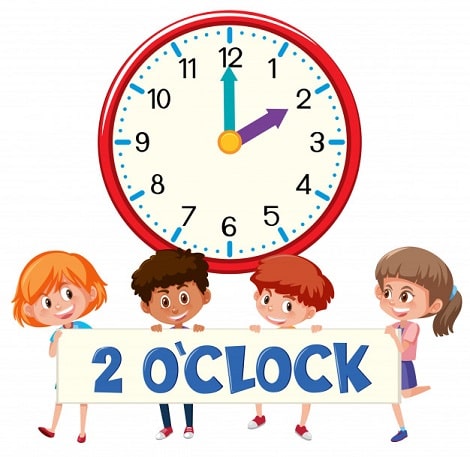
Obtuse Angle: An obtuse angle is greater than a right angle.
Below image is an obtuse angle.
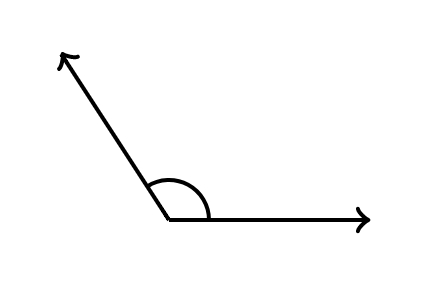
At 5 o' clock, the hands of a clock make an obtuse angle. See the image given below.

Zero Angle: When two arms overlap each other, they make an angle that is called zero angle.
For example, at 12 o' clock both hands of a clock overlap each other to make a zero angle.
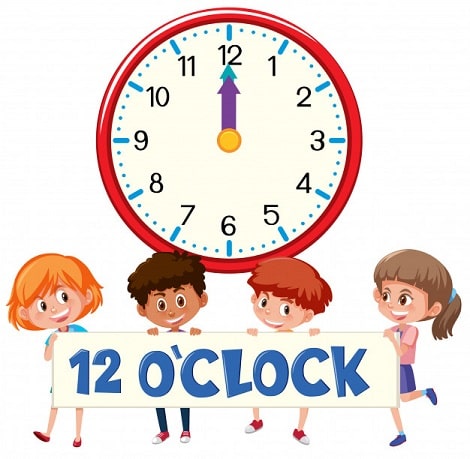
Straight Angle: An angle made by arms going in opposite direction is called a straight angle.

For example, the hands of a clock make a straight angle at 6 o' clock.

Closed Figures
Figures that are closed from all sides are called closed figures.
Look at the figures given below. They have three or more line segments. Such closed figures are called polygons.

Some examples of polygons are triangle, quadrilaterals (rectangle, square).
Triangle: It is a polygon with 3 line segments and 3 vertices. It also has 3 angles. The figure given below is a triangle.

The above triangle can be written as △ABC. The symbol △ stands for a triangle.
A triangle (△ABC) has the following properties:
- The line segments are AB, BC and CA.
- The vertices are A, B and C.
- The angles are ∠A, ∠B and ∠C.
Quadrilaterals: A polygon formed by four line segments is called a quadrilateral.
The four line segments are the four sides of the quadrilateral.
A quadrilateral has 4 sides, 4 vertices and 4 angles. See the image given below.
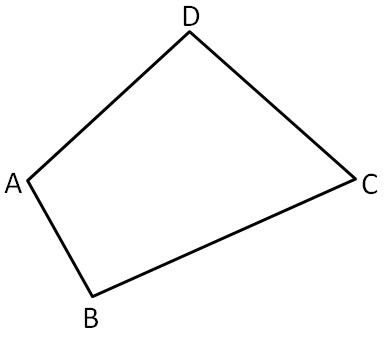
Examples of quadrilaterals are rectangle and square.
Rectangle: A quadrilateral in which opposite sides are equal and all angles are right angles is called a rectangle.
The image given below is an example of a rectangle. Here, ABCD is a rectangle.

Square: A rectangle in which all sides are equal is a square.
Thus, a square is a quadrilateral in which all sides are equal and all angles are right angles.
See the image given below. Here, ABCD is a square.

Please Note: A square is a rectangle but a rectangle is not a square
